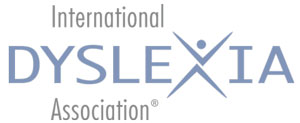DOWNLOAD
This fact sheet focuses on the importance of universal screening in the primary grades to identify students who are in need of reading intervention.
What are the purposes for different types of assessment?
Assessment can have multiple purposes:
• Universal Screening—to determine a student’s risk for reading difficulty and the need for intervention
• Intervention Planning—to make data- based decisions for instruction informed by results of testing
• Progress Monitoring—to determine if progress is adequate or if more (or different) intervention is required
• Diagnostic Evaluation—to identify an individual’s learning strengths and weaknesses and likely source of academic problems—and to determine if profile fits the definition of a learning disorder (diagnosis)
Universal Screening: K–2 Reading
Since research has shown that the rapid growth of the brain and its response to instruction in the primary years make the time from birth to age eight a critical period for literacy development (Nevills & Wolfe, 2009), it is essential to identify the instructional needs of struggling students as soon as possible. It is imperative to “catch them before they fall” (Torgesen, 1998). Thus, educators need to understand:
• The basic principles of universal screening
• Findings from cognitive science that are the basis of reading and literacy development
• Potential risk factors (i.e., “red flags”) that indicate potential for common reading problems, including dyslexia
What is a screening?
Screening measures, by definition, are typically brief assessments of a particular skill or ability that is highly predictive of a later outcome. Screening measures are designed to quickly differentiate students into one of two groups: 1) those who require intervention and 2) those who do not. A screening measure needs to focus on specific skills that are highly correlated with broader measures of reading achievement resulting in a highly accurate sorting of students.
Universal screening tools have the following characteristics:
• Quick and targeted assessments of discrete skills that indicate whether students are making adequate progress in reading achievement
• Alternate equivalent forms so they can be administered three to four times a year
• Standardized directions for administration and scoring
• Have established reliability and validity standards
Why should we screen?
Universal screening results should identify those students who are potentially at risk for reading failure, including those who may have developmental reading disabilities.
Dyslexia is a neurobiological disorder. Research has shown that brain plasticity decreases through childhood. It takes four times as long to intervene in fourth grade as it does in late kindergarten (NICHD) because of brain development andbecause of the increase in content for students to learn as they grow older. Children at risk for reading failure can be reliably identified even before kindergarten. “Deficits in phonological awareness, rapid automatized naming, verbal working memory and letter knowledge have been shown to be robust precursors of dyslexia in children as young as age three” (Gaab, 2017). Extensive evidence exists that supports the fact that early intervention is critical. Struggling readers who do not receive early intervention tend to fall further behind their peers (Stanovich, 1986).
Psychological and clinical implications of poor reading development can be prevented/minimized if we identify and intervene as early as possible.
Screening Administration
A screening instrument needs to be quickly and easily administered. Screening can occur as early as preschool, but no later than kindergarten and at least three times a year through second grade. It is imperative for screening to occur for all children, not just the ones “at risk” or who have already been determined to have reading failure. Students who are English Language Learners or speak in a different dialect should be included in this assessment. Since “dyslexia is strongly heritable, occurring in up to 50% of individuals who have a first-degree relative with dyslexia” (Gaab, 2017) initial screening should include family history. Teacher input on a child’s phonological, linguistic and academic performance is also essential. Teachers can complete screening tools that require their rating of a child’s abilities on a scale to measure risk of reading disability.
What are typical screening measures by grade level?
Although a quick assessment, a screening battery should include key domains, identified as predictors of future reading performance.
Kindergarten:
Research indicates that kindergarten screening measures are most successful when they include assessment of the following areas: phonological awareness including phoneme segmentation, blending, onset and rime; rapid automatic naming including letter naming fluency; letter sound association; and phonological memory, including non-word repetition (Catts, et al. 2015; Jenkins & Johnson, 2008).
First Grade:
Research indicates first-grade screening measures are most successful when they include assessment of the following areas:
phoneme awareness, specifically phoneme segmentation, blending, and manipulation tasks; letter naming fluency; letter sound association; phonological memory, including nonword repetition; oral vocabulary; and word recognition fluency (i.e., accuracy and rate) (Compton, et al., 2010; Jenkins & Johnson, 2008).
The Center on Response to Interventions Screening Briefs indicate that oral reading fluency could be added in mid first grade.
Second Grade:
The Center on Response to Interventions Screening Briefs indicate that in second grade, screening assessment should include word identification, oral reading fluency, and reading comprehension. Word identification assessments should include real and nonsense words.
K – 2:
The assessment of oral expressive and receptive language (including vocabulary, syntax and comprehension) provides key information in an individual’s reading profile and is predictive of reading outcomes. Unfortunately, there are limited measures at the K-2 level to assess these areas for screening purposes. Without such screening measures, testing for expressive and receptive language is usually done in diagnostic evaluations (Gersten et al., 2008).
There is no one test or assessment tool that measures all reading skills. Different assessments measure different discrete skills. Ideally, multiple measures for screening purposes should be used to ensure that all identified skills have been assessed at the appropriate grade level. When multiple measures are used to screen students, the accuracy of identifying those at risk improves significantly.
Some examples of screening assessment tools include (but are not limited to) DIBELS Next, Aimsweb, Predictive Assessment of Reading (PAR), and the Texas Primary Reading Inventory (TPRI). (Links to these examples are listed at the end of this fact sheet.)
Intervention Planning
Data from universal screenings should be used to make informed decisions about evidence-based interventions and the progress monitoring that should follow. Interventions should address the needs of the student, as identified by the screening process. Progress Monitoring is then done to determine if progress is adequate or if more (or different) intervention is required.
Progress Monitoring
Progress should be monitored frequently to determine the student’s response to the chosen intervention and rate of improvement. The IES Practice Guide, Assisting Students Struggling with Reading: Response to Intervention (RTI) and Multi-Tier Intervention in the Primary Grades (Gersten et al., 2008) states that progress can be monitored weekly, but should be monitored no less than once per month.
Summary of suggested progress monitoring measures to use in K – 2:

What is a comprehensive diagnostic evaluation and how does it differ from screening?
According to the Dyslexia Assessment Fact Sheet (Lowell, Felton, & Hooks, 2014), a formal clinical evaluation is necessary to determine a diagnosis of dyslexia if the student continues to struggle with literacy skills, despite high-quality instruction using an RTI (Response to Intervention) approach. Areas to be assessed, in depth, by a team of individuals include the following: phonological awareness, phonological or language-based memory, rapid automatic naming, receptive vocabulary, phonics skills, decoding/encoding real and pseudo-words, oral reading fluency, writing at the sentence and paragraph level. Evaluations are completed by trained specialists (e.g., psychologists and neuropsychologists, speech and language pathologists, or educational specialists who have advanced degrees in assessment or education.)
| SCREENING | EVALUATION | |
| Time Involved | Brief; Administered individually or in a group | Lengthy; Administered individually |
| Characteristics | Criterion Referenced; Curriculum based measures; Arbitrary cut-off points | Norm Referenced; standardized based on standard scores, percentiles, grade/age based equivalencies |
| Focus | Specific skill areas | Extensive assessment of functioning (cognitive, academic, linguistic, motoric, behavioral) |
| Administrator | Teachers | Trained specialist (School Psychologist, LDT/C, Speech Language Therapist |
| Reason | Determine students who are at risk and in need of general education remediation | Identify strengths and weaknesses within profile in order to determine classification for special educations placement and services |
Screening vs. Evaluation
The role of universal screening in primary grades to identify students who are in need of reading intervention has been widely studied. The old saying, “Just wait and they will catch up,” does not hold up to all the empirical data and support for providing early intervention for struggling readers. Educators need to be well versed in the evidence-based methods that identify the risk for reading difficulty, and they need to make good decisions that provide appropriate educational interventions for their students who may be struggling. These decisions need to be informed by data that is gathered as a result of efficient assessments and progress monitoring that are accomplished in a regular and timely manner. It is critical that educators understand the importance of these factors in universal screening and early intervention to ensure that all students have the best opportunities for developing adequate literacy skills.
References
Catts, H. W., Nielsen, D. C., Bridges, M. S., Liu, Y. S., & Bontempo, D. E. (2015). Early identification of reading disabilities within an RTI framework. Journal of Learning Disabilities, 48(3), 281–297.
Center on Response to Intervention (n.d.). Progress monitoring. Washington, DC: American Institutes for Research. Retrieved from https://intensiveintervention.org/data-based-individualization/progress-monitoring
Center on Response to Intervention (n.d.). Understanding Screening: What Do the Screening Standards Mean? Washington, DC: American Institutes for Research. Retrieved from https://intensiveintervention.org/resource/screening-standards-overviews
Center on Response to Intervention (n.d.). Screening tools chart. Washington, DC: American Institutes for Research. Retrieved from https://charts.intensiveintervention.org/ascreening
Compton, D. L., Fuchs, D., Fuchs, L. S., Bouton, B., Gilbert, J. K., Barquero, L. A., Cho, E., & Crouch, R. C. (2010). Selecting at-risk first-grade readers for early intervention: Eliminating false positives and exploring the promise of a two-stage gated screening process. Journal of Educational Psychology, 102(2), 327–340.
Foorman, Barbara R.; Francis, David J.; Shaywitz, Sally E.; Shaywitz, Bennett A.; Fletcher, Jack M.
Blachman, Benita A. (Ed). (1997). Foundations of reading acquisition and dyslexia: Implications for early intervention , (pp. 243-264). Mahwah, NJ, US: Lawrence Erlbaum Associates Publishers, xxii, 463 pp.
Gaab, N. (2017). It’s a myth that young children cannot be screened for dyslexia. Baltimore, MD: International Dyslexia Association. Retrieved from http:// dyslexiaida.org/its-a-myth-that-young-children-cannot-be-screened-for-dyslexia/
Gersten, R., Compton, D., Connor, C. M., Dimino, J., Santoro, L., Linan-Thompson, S., & Tilly, W. D. (2008). Assisting students struggling with reading: Response to Intervention and multi-tier intervention for reading in the primary grades. A practice guide. (NCEE 2009-4045). Washington, DC: National Center for Education Evaluation and Regional Assistance, Institute of Education Sciences, U.S. Department of Education. Retrieved from http://ies.ed.gov/ncee/wwc/ publications/practiceguides/
Hosp, M., Hosp, J., & Howell, K. (2007). The ABCs of CBM: A practical guide to curriculum-based measurement. New York, NY: Guilford Press.
Jenkins, J. R., & Johnson, E. S. (2008). Universal screening for reading problems: Why and how should we do this? New York, NY: RTI Action Network. Retrieved from http://www.rtinetwork.org/essential/assessment/screening/readingproblems
Lowell, S., Felton, R. & Hook, P. (2014) Basic facts about assessment of dyslexia. Baltimore, MD: The International Dyslexia Association.
Moats, L. C. (2005). Language essentials for teachers of reading and spelling module 8: Assessment for prevention and early intervention (K-3). Longmont, CO: Sopris West Educational Services.
Nevills, P., & Wolfe, P. (2009). Building the reading brain, PreK–3 (2nd ed.). Thousand Oaks, CA: Corwin Press.
Stanovich, K. E. (1986). Matthew effects in reading: Some consequences of individual differences in the acquisition of literacy. Reading Research Quarterly, 21(4), 360–406.
Torgesen, J. K. (1998). Catch them before they fall: Identification and assessment to prevent reading failure in young children. American Educator, 22, 32–39.
https://ies.ed.gov/ncee/wwc/Docs/PracticeGuide/rti_re ading_pg_021809.pdf
The International Dyslexia Association (IDA) thanks Dee Rosenberg, M.A., LDT/C, Alison Pankowski, M.Ed., LDT-C, and Barbara Wilson for their assistance in the preparation of this fact sheet.

